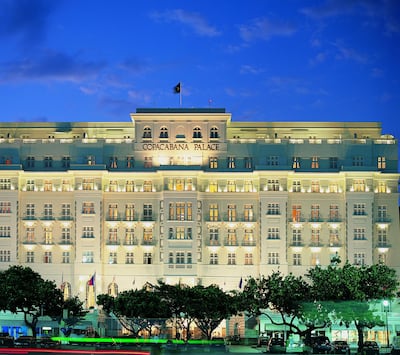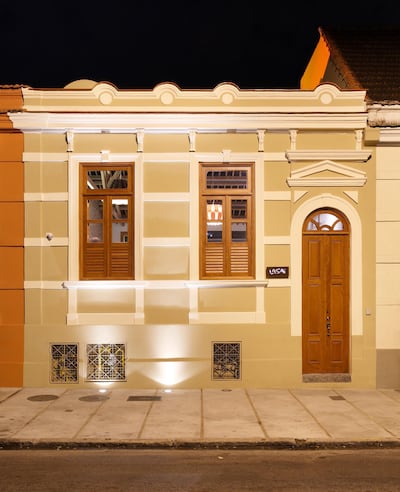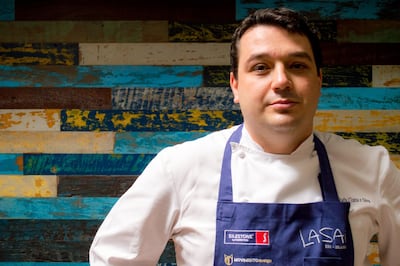The lyrics tell us the Girl From Ipanema is "tall and tan and young and lovely", and more than 50 years after that song's release, Brazil's beachgoers are still every bit as body-conscious, carrying off their swimwear with incontestable confidence, many with acai smoothies in hand as they perambulate down the Ipanema shoreline.
For many people, this is the classic image of Rio de Janeiro: impossibly good-looking, toned people sipping on fruit juice in the sunshine. A visitor could be forgiven for thinking that the average Carioca (a native of Rio) barely eats at all and that they might run, slow-motion Baywatch-style, away from carbohydrates.
They would be wrong. Not so far from the shores of Ipanema and Copacabana, chefs at Michelin-starred restaurants serve up some of the best, most calorific food anywhere in Brazil. The beaches of Ipanema and Copacabana meet at Arpoador, the former beach running east to west and the latter north to south, with the famous peaks of Sugarloaf and Corcovado in the background.
You could argue that the Belmond Copacabana Palace is as established as those mountains. Built in 1923, it is probably the most famous hotel in the country, having at various times hosted everyone from The Rolling Stones to Justin Bieber. Perhaps unsurprisingly, given such a clientele, its restaurants operate at the highest level and those standards were made clear shortly after I visit, with its Italian offering, Cipriani, awarded its first Michelin star.
The hotel's ambitious pan-Asian restaurant Mee has held one since 2015 and before I've even been served an amuse-bouche, it's easy to see why. The interiors are atmospheric, with enormous floor-to-ceiling Asian faces looking out across the restaurant. The service is friendly and efficient without being casual, or worse, servile.
There's an extensive a la carte menu, but it seems churlish to dodge the Mee-chelin menu, a degustation selection signed off by celebrity chef Ken Hom that caught the eye of the French judges four years ago. It's a languid dance across Asia, with delightful Chinese dim sum, a quirky interpretation of Korean bao and Japanese salmon. On and on it goes, never a bad bite to be found in any of it. By the time I roll out into the warm South American night, almost three hours later, I feel as though I've been on a whirlwind tour of a different continent entirely.
All of which is perfectly delicious and lovely, but the next night, a 20-minute taxi away, Lasai feels far more local. Run by executive chef Rafa Costa e Silva, the restaurant also has a Michelin star, which is to the chef’s immense credit, but perhaps also underlines the credentials of the guide itself. It has long been awarding stars to French and Asian restaurants, but Lasai represents something quite different.
“This restaurant serves urban food, but with products from our gardens – we have two, one here in Rio and another about two hours away in the mountains,” says Costa e Silva. “We try to keep it casual and include lots of vegetables. We didn’t want the usual Brazilian food, fried things, with black beans and rice. Here it’s a lot lighter to eat.”
Given the reliance on his own produce, it's no surprise that Costa e Silva's menu is constantly evolving and reactive. The sample offerings on the website only give ideas of what might actually arrive on the plate by the time you're seated. While it could easily be argued that Lasai is the most Brazilian of all Rio's fine-dining offerings, Costa e Silva's training took place abroad, partly under the wing of famous French-American chef Jean-Georges Vongerichten in New York. Costa e Silva then spent several years rounding out his culinary philosophy in the Spanish part of the Basque Country.
With such a grounding, it doesn't seem like so much of a surprise that the Michelin Guide's gaze eventually fell on this corner of Botafogo. "Commercially it's really good to have the star and if they gave the restaurant another one I wouldn't be sad, but for me, being on the World's 50 Best [Restaurants] list was the thing that changed our clientele more," he says of the accolade Lasai received last year.
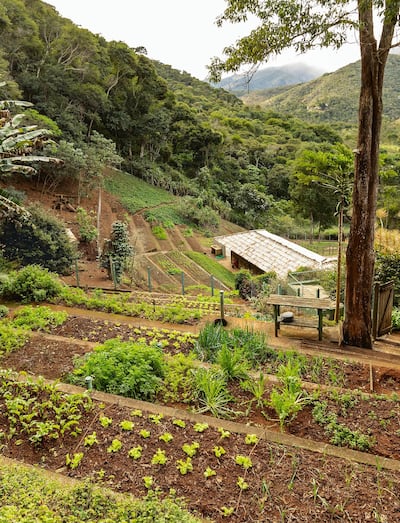
While Rio's best restaurants are getting more recognition than ever, for a long time, Sao Paulo was regarded as the culinary capital of Brazil. This was in part due to its immense population (more than double that of Rio) requiring a higher number of restaurants of all levels. Moreover, Sao Paulo is home to D O M restaurant by pioneering Brazilian chef Alex Atala. With two Michelin stars and a long-held position in the top 10 of the World's 50 Best Restaurants, D O M has drawn critics and fans from across the world.
It'd be no surprise if Sao Paulo's status led to a little competition, or even jealousy, from Rio's restaurateurs, but Costa e Silva says he doesn't see it like that. "I think they have some rivalries and competition between each other in Sao Paulo, but over here it's a lot more relaxed," he says. "Sao Paulo has the best food in Brazil generally, but lots of people are saying that for fine dining, things are better here."
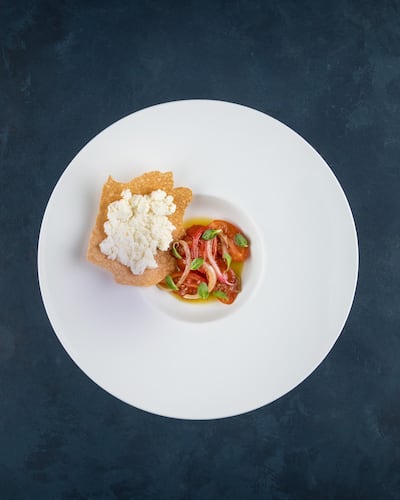
On my final night in Rio, it's hard to convince myself that I have any appetite left, but it feels important to visit Olympe, a family-run restaurant tucked away in the Lagoa neighbourhood. This romantic little eatery has been going for more than 30 years, and is now run by Thomas Troisgros, who inherited the business from his French father, Claude, and maintained its Michelin star.
The Gallic influence is clearly present both in the technique and ingredients of its divine tasting menu, but Thomas insists that first and foremost he is a proud Carioca. "My food is what I like to eat, what I find interesting in the culinary world," he explains. "My inspirations are travelling, traditional foods and my friends abroad, so my food background is French, but then adapted to the local ingredients. Of course, you need to do an immersion to your 'terroir' and understand the culture to fulfil a well-rounded menu."
Lasai and Olympe sat next to each other on Latin America's 50 Best Restaurants list last year – at No 26 and No 27, respectively – and are united by their marrying of Brazilian food with foreign techniques. This is where their success lies. As Thomas puts it: "Rio is a melting pot, which allows us chefs to use the Brazilian flair and mix it with our own influences."

